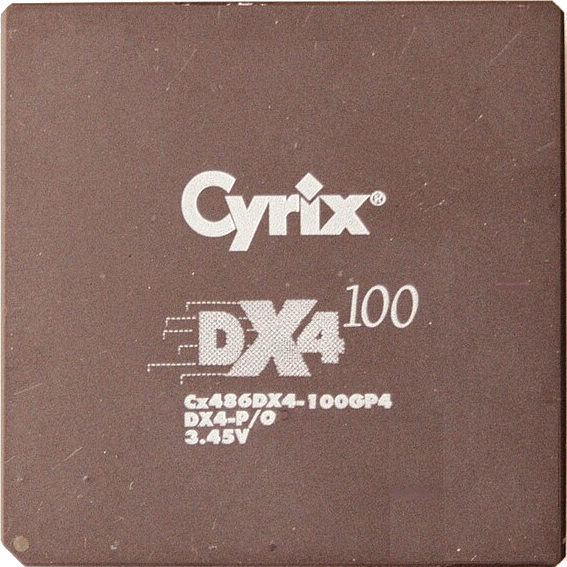- cross-posted to:
- tech@programming.dev
- cross-posted to:
- tech@programming.dev
It would have been nice if they came up with something shorter like .lan.
Oh, that’s LAN - I thought you’d put ian and I was trying to get the joke. Stupid sans-serif fonts.
Use it anyway.
You go to networking jail for that.
Shit, let’s hope the ICANN cops don’t find me out then… I’ve been using it for years!
“I hereby sentence you to two years on your own VLAN with no gateway”
“Please Mr. Router, mercy!”
iptables -I APPEALS -j DROP
418
Lowercase .lan uppercase .LAN…
Straight to jail
Sorry. I chose .local and I’m sticking to it.
I went with .home and so far the problems are within reason
It’s also second only to .com in terms of query volume in ICANN’s Magnitude statistics with 980 mil vs .internal’s 60 mil. Not sure if that makes it a de facto standard, but it’s close.
I switched from .local to .honk and I’m never looking back.
Fucking GENIUS.
I don’t get it.
I was using .local, but it ran into too many conflicts with an mDNS service I host and vice versa. I switched to .lan, but I’m certainly not going to switch to .internal unless another conflict surfaces.
I’ve also developed a host-monitoring solution that uses mDNS, so I’m not about to break my own software. 😅
.internal takes to long to type
Browsers barf at non https now. What are we supposed to do about certificates?
Either ignore like I do or add a self signed cert to trusted root and use that for your services. Will work fine unless you’re letting external folks access your self hosted stuff.
If you mean properly signed certificates (as opposed to self-signed) you’ll need a domain name, and you’ll need your LAN DNS server to resolve a made-up subdomain like
lan.domain.com. With that you can get a wildcard Let’s Encrypt certificate for*.lan.domain.comand all yourhttps://whatever.lan.domain.comURLs will work normally in any browser (for as long as you’re on the LAN).Right, main point of my comment is that .internal is harder to use that it immediately sounds. I don’t even know how to install a new CA root into Android Firefox. Maybe there is a way to do it, but it is pretty limited compared to the desktop version.
This is not a new problem, .internal is just a new gimmick but people have been using .lan and whatnot for ages.
Certificates are a web-specific problem but there’s more to intranets than HTTPS. All devices on my network get a .lan name but not all of them run a web app.
You do not have to install a root CA if you use let’s encrypt, their root certificate is trusted by any system and your requested wildcard Certificate is trusted via chain of trust
That’s if you have a regular domain instead of.internal unless I’m mixing something. Topic of thread is .internal as if it were something new. Using a regular domain and public CA has always been possible.
@solrize @thehatfox get a free wildcard cert for your domain and use it just like any other. nothing new, nothing different. I have those running on LAN-only hosts behind a firewall and NAT with no port punching or UpNP or any ingress possible.
if you don’t want to run a private CA with automated cert distribution (also simple with ansible or a few tens of LOC in shell or python), the LetsEncrypt is trivial and costs nothing – still requires one to load the cert and key onto a server though, which is 2/3 of the work vs private CA cert management.
Private CA is the only way for donations which cannot be resolved in the Internet
How do you propose to get LetsEncrypt to offer you a certificate for a domain name you do not and cannot control?
@JackbyDev Why would that be a question at all? Buy a domain name and take care of your dns records.
that’s an odd way to say that you don’t own any domains. that’s step one, but does it even need to be said?
You cannot buy .internal domains. That’s my point.
You can set up your own CA, sign certs and distribute the root to every one of your devices if you really wanted to.
Yeah I know about that, I’ve done it. It’s just a PITA to do it even slightly carefully.
That sounds like a bad idea, you would need your CA and your root certs to be completely air gapped for it to be even remotely safe.
Why?
That’s a rather absolutist claim when you don’t know the orgs threat model.
For self hosting at least, having your own CA is a pain in the ass to make sure everything is safe and that nobody except you has access to your CA root key.
I’m not saying it’s not doable, but it’s definitely a lot of work and potentially a big security risk if you’re not 100% certain of what you’re doing.No worse than protecting your ssh key. Just keep it somewhere safe.
Just use only VPN to access your services behind the reverse proxy, if you want prevent unauthorised connections.
CA certificates are not here to prevent someone accessing a site, they are here, so that you can be sure, that the server you are talking to is really the one belonging to the domain you entered and to establish a tunnel in order to send the API calls (html, css, javascript etc.) and answers encrypted.
That’s the problem, if anyone somehow gets your root CA key, your encryption is pretty much gone and they can sign whatever they want with your CA.
It’s a lot of work to make sure it’s safe in a home setup.You can just issue new certificates one per year, and otherwise keep your personal root CA encrypted. If someone is into your system to the point they can get the key as you use it, there are bigger things to worry about than them impersonating your own services to you.
What if I told you, businesses routinely do this to their own machines in order to make a deliberate MitM attack to log what their employees do?
In this case, it’d be a really targetted attack to break into their locally hosted server, to steal the CA key, and also install a forced VPN/reroute in order to service up MitM attacks or similar. And to what end? Maybe if you’re a billionaire, I’d suggest not doing this. Otherwise, I’d wonder why you’d (as in the average user) be the target of someone that would need to spend a lot of time and money doing the reconnaissance needed to break in to do anything bad.
Ah, you mean they put the cert in a transparent proxy which logs all traffic? Neat idea, I should try it at home
I’m talking about home hosting and private keys. Not businesses with people whose full time job is to make sure everything runs fine.
I’m a nobody and I regularly have people/bots testing my router. I’m not monitoring my whole setup yet and if someone gets in I would probably not notice until it’s too late.
So hosting my own CA is a hassle and a security risk I’m not willing to put work into.Yeah that’s your situation. Some people are fine with it
As opposed to what, the domain certificate? Which can’t be air-gapped because it needs to be used by services and reverse proxies.
The domain certificate is public and its key is private? That’s basically it, if anyone gets access to your key, they can sign with your name and generate certificates without your knowledge. That’s my opinion and the main reason why I wouldn’t have a self hosted CA, maybe I’m wrong or misled, but it’s a lot of work to ensure everything is safe, only for a self hosted setup.
I found options like .local and now .internal way too long for my private stuff. So I managed to get a two-letter domain from some obscure TLD and with Cloudflare as DNS I can use Caddy to get Let’s Encrypt certs for hosts that resolve to 10.0.0.0/8 IPs. Caddy has plugins for other DNS providers, if you don’t want to go with Cloudflare.
Nothing, this is not about that.
This change gives you the guarantee that
.internaldomains will never be registered officially, so you can use them without the risk of your stuff breaking should ICANN ever decide to make whatever TLD you’re using an official TLD.That scenario has happened in the past, for example for users of FR!TZBox routers which use
fritz.box..boxbecame available for purchase and someone boughtfritz.box, which broke browser UIs. This could’ve even been used maliciously, but thankfully it wasn’t.
That’s good, I never liked the clunky
.home.arpadomain.Well, I just realized I completely goofed, because I went with .arpa instead of .home.arpa, due to what was surely not my own failings.
So I guess I’m going to be changing my home’s domain anyway.
Interesting. I’ve been using “.home.arpa” for a while now, since that’s one of the other often used ways.
I guess no one offered anything for .internal
It should be reserved for sex toys.
Just saying.
What are you doing step-LAN?
I saw you peeked inside my ssh key drawer last night step-LAN
Please don’t use the duplex again.
Acronyms, initialisms, abbreviations, contractions, and other phrases which expand to something larger, that I’ve seen in this thread:
Fewer Letters More Letters CA (SSL) Certificate Authority DNS Domain Name Service/System HTTP Hypertext Transfer Protocol, the Web HTTPS HTTP over SSL IP Internet Protocol SSL Secure Sockets Layer, for transparent encryption TLS Transport Layer Security, supersedes SSL VPN Virtual Private Network
6 acronyms in this thread; the most compressed thread commented on today has 6 acronyms.
[Thread #910 for this sub, first seen 8th Aug 2024, 09:05] [FAQ] [Full list] [Contact] [Source code]
We use .lh, short for localhost. For local network services I use service discovery and .local. And for internal stuff we just use a subdomain of our domain.
Why do I care what ICANN says I can do on my own network? It’s my network, I do what I want.
Try using .com for your internal network and watch the problems arise. Their choice to reserve .internal helps people avoid fqdn collisions.
Well as long as the TLD isn’t used by anyone it should work internally regardless of what ICANN says, especially if I add it to etc/hosts
Sure, you can do whatever you want. You could even use non-rfc1918 addresses and nobody can stop you. It’s just not always a great idea for your own network’s functionality and security. You can use an unregistered TLD if you want, but it’s worth knowing that when people and companies did that in the past, and the TLD was later registered, things didn’t turn out well for them. You wouldn’t expect .foo to be a TLD, right? And it wasn’t, until it was.
German router and network products company AVM learned the hard way that this is a bad idea. They use fritz.box for their router interface page and it was great until tld .box became publicly available and somebody registered fritz.box.
Having a reserved local/internal only tld is really great to prevent such issues.
YouCANN do anything you want?
I will stick with .lan
My network is .milkme and I have nipples… will they approve it?
You can milk anything with nipples!

















